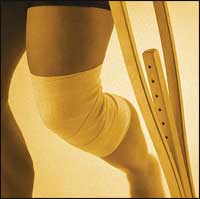A study investigating the potential long-term link between levels of vitamin D intake and higher 10-year fracture risk in older adult women was recently showcased at the World Congress on Osteoporosis, Osteoarthritis and Musculoskeletal Disease. In the study, Swedish researchers reportedly used sequential assessment of serum vitamin D to determine if sustained hypovitaminosis D in older adult women leads to increased 10-year fracture incidence.
The researchers note that study participants at baseline were 1,044 Swedish women, all aged 75 years old. A total of 715 participants attended a 5 year follow up. An International Osteoporosis Foundation (IOF) news release indicates that Serum 25-hydroxyvitamin D (25OHD) levels (nmol/l) were classified as low (<50), intermediate (50) and high (>75). Researchers explain that women with values in the same 25OHD category at both samplings were considered to have low, intermediate, or high levels. The study’s fracture data was followed for 10 years through X-rays at the radiology department.
According to study results, incidence of hip fractures within 10 years was significantly lower in those women who were vitamin D sufficient (?50 nmol/l) at baseline and maintained this level at 5 years. Women sustaining FRAX fractures totaled out to 26.2% and 30% in the group that had consistently high or intermediate 25OHD levels compared to 45.6% in the group with consistently low levels.
The study also indicates that the incidence of shoulder, radius, and vertebral fractures was not linked to 25OHD status. The researchers add that the much of the fractures occurred between 5 and 10 years post-baseline, however the time of first fracture did not significantly differ between the three categories of 25OHD using either a single or serial measurement.
Kristina Åkesson, professor, Clinical and Molecular Osteoporosis Research Unit at Lund University, Chair of the IOF Capture the Fracture campaign, rearticulates the study’s findings, which conclude, “in the population sample of elderly women, vitamin D insufficiency sustained over 5-years was associated with increased 10-year risk of osteoporotic fracture.”
Åkesson adds that the research suggests having higher vitamin D levels could lower falls and fracture risk in older adults. According to the release, IOF global recommendations for vitamin D call for intakes of 800 to 1000 IU/day in older adults for fracture and falls prevention.
Source: International Osteoporosis Foundation





